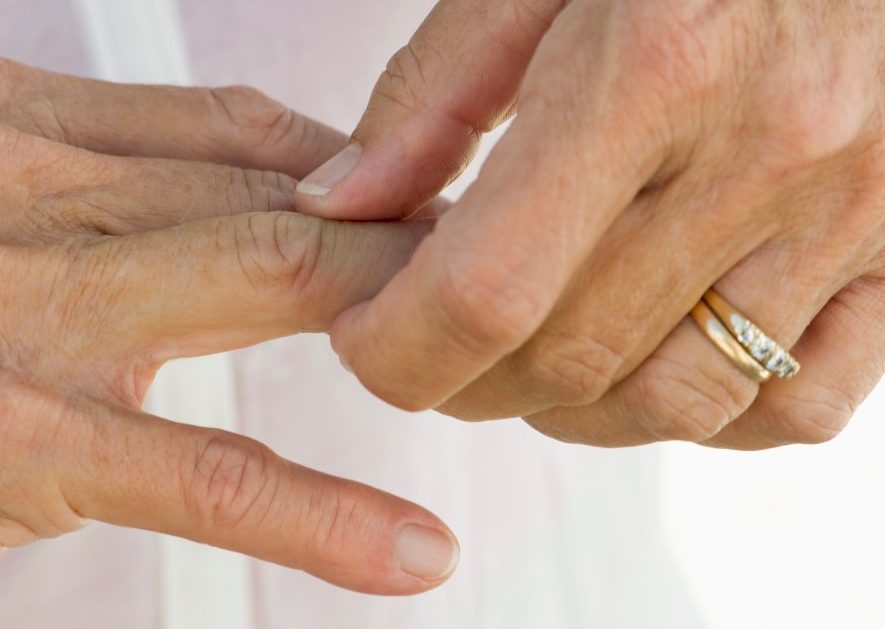Type 2 Diabetes Symptoms

Type 2 diabetes symptoms can hide for months, so get your blood sugar checked once a year. Here are the symptoms you should discuss with your doctor if you have them.
Keira Fleming found out that she had type 2 diabetes during her annual checkup. She had two of the symptoms but completely dismissed them.
“I was urinating a lot, and my vision started getting blurry,” she said. “I chalked that up to getting older.” The 67-year-old didn’t feel ill and was quite surprised by the diagnosis.
According to the Centers for Disease Control and Prevention, 37 million people in the U.S. have diabetes. More than eight of 10 people with prediabetes, high blood sugar that could develop into diabetes, don’t know they have it. With so many undiagnosed people, knowing what to look for can lead to a diagnosis. Once you have a diagnosis, you can take better care of yourself.
Mallory Judge also suffered from frequent urination. She thought she had a bladder infection. “That’s what brought me to the doctor,” she said. “When I was in my doctor’s office, she ran a blood test that came back positive for type 2 diabetes.”
YOU MIGHT ALSO LIKE: Do You Need to Monitor Your Blood Sugar Better?
Type 2 diabetes symptoms
In addition to urinating often and having blurry vision — type 2 diabetes symptoms include:
- Being thirsty a good part of the day
- Having unexpected weight gain or weight loss
- Excessive hunger
- Feeling exhausted
- Getting frequent infections of the skin, gums, or bladder
- Having wounds that don’t heal
Type 2 diabetes symptoms in women also include having frequent vaginal yeast infections. Type 2 diabetes symptoms in men include infections on the foreskin of the penis.
Peripheral neuropathy, another complication of type 2 diabetes, affects your feet and legs first. It can move to your hands and arms.
Symptoms of type 2 diabetes with peripheral neuropathy
- A tingling or numbness in your feet, legs, hands, or arms
- Sharp pains in your feet, legs, hands, or arms
- Weak muscles
- An increased sensitivity to being touched
- Having a loss of balance
- Suffering from intense foot or joint pain
- A burning sensation in your legs, feet, hands, and arms
- Leg pain at night
- Suffering from muscle cramps
If you notice type 2 diabetes symptoms
If you notice any of the above symptoms of high blood sugar, talk to your doctor. Diabetes affects the way your body processes glucose (a form of sugar in your body). There are two types of diabetes, type 1 and type 2. Type 2 diabetes is also called adult-onset diabetes and non-insulin-dependent diabetes. It occurs when your body doesn’t produce enough insulin or is unable to use insulin properly.
Type 2 diabetes usually affects people who are 40 or older, overweight, or have close family members with the disease. Developing type 2 diabetes at a younger age is becoming more common.
If you have a parent with type 2 diabetes, you should get your blood sugar checked once a year. Diabetes can be hereditary. If you have any of the symptoms in this article, you should talk to your doctor about having your blood tested for diabetes.
Blood tests for diabetes
- The A1C test, which shows your average blood glucose level for the past 2 to 3 months.
- Fasting blood glucose, after having nothing to eat or drink for 8 hours, overnight: 100 to 125 mg/dl indicates prediabetes; above 125 mg/dl indicates diabetes.
- Oral glucose tolerance test: a two-hour test requiring fasting overnight and consuming a sugary drink from your lab, measuring periodic blood sugar leves over a couple of hours. A level of greater than 300 mg/dl points to diabetes.
If you test positive for type 2 diabetes your doctor will make sure you control the level of sugar in your blood, teaching you how to measure your blood sugar regularly, plan healthy meals, exercising daily, and take medication (if necessary).
How to prevent type 2 diabetes
- Maintain a healthy weight.
- Exercise daily (30 minutes or more each day).
- Eat a healthy diet of fruits, vegetables, lean protein, and high-fiber grains.
- Limit the amount of sugar in your diet and avoid processed foods.
Understanding the symptoms of type 2 diabetes will help you manage the disease and feel better.
YOU MIGHT ALSO LIKE: Glycemic Load – A Better Way to Monitor Blood Sugar?
Updated:
March 06, 2023
Reviewed By:
Janet O’Dell, RN